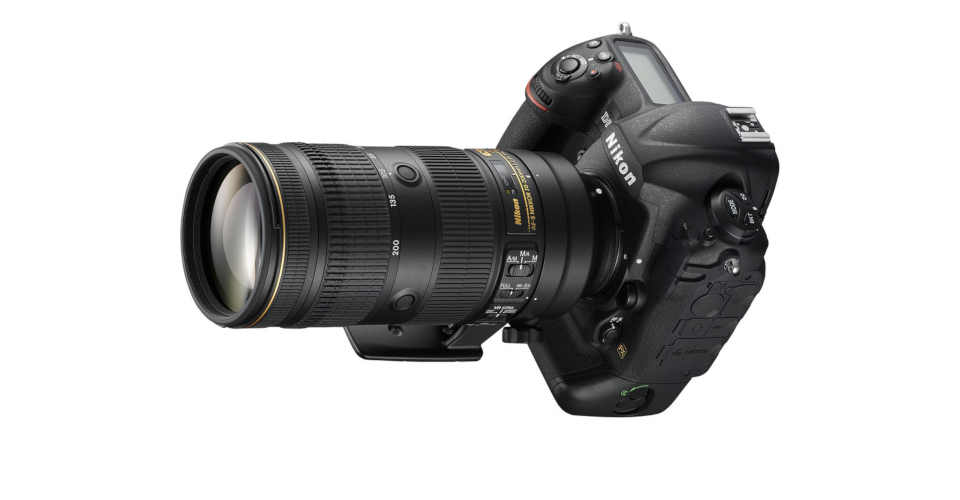6 Best Nikon Telephoto Lenses in 2020
Telephoto lenses are an essential part of every photographer’s kit. They’re one of the most versatile lens types since using a telephoto works well for portraits, sports, wildlife, and even landscapes. They let you exclude boring parts of a scene and produce detailed pictures of subjects without getting close. Telephoto lenses create pleasing depth of field effects more easily than shorter models, and they use wide-open apertures to snap sharp, well-lit action shots.
You’re in luck if you own a Nikon camera because this article features the six best Nikon telephoto lenses from the company’s rich catalog. We’ve included models for several Nikon mount types as well as both zoom and prime options. See how they perform and get the lens that fits your budget and needs best.
| Budget |
|---|
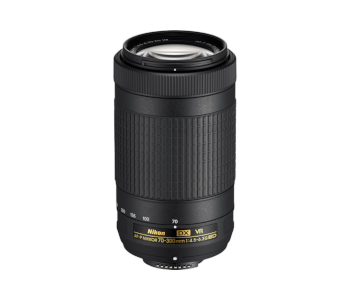 |
| Nikon AF-P DX NIKKOR 70-300mm f/4.5-6.3G ED VR |
| 4.4/5.0 |
| Mount: Nikon DX |
| Image stabilization: Yes |
| VR lets you shoot in low light with good results. |
| Check B&H |
| Best Value |
|---|
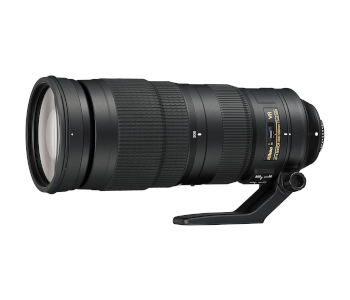 |
| Nikon AF-S NIKKOR 200-500mm f/5.6E ED VR |
| 4.7/5.0 |
| Mount: Nikon F |
| Image stabilization: Yes |
| Good all-around sharpness and flare reduction. |
| Check Amazon |
| Top Pick |
|---|
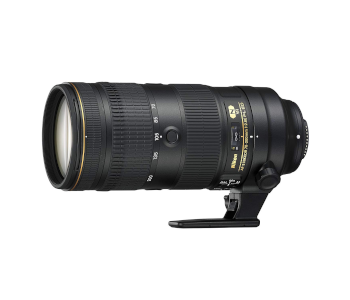 |
| Nikon AF-S NIKKOR 70-200mm f/2.8E FL ED VR |
| 4.9/5.0 |
| Mount: Nikon F |
| Image stabilization: Yes |
| Intuitive and useful physical controls. |
| Check B&H |
Nikon Telephoto Lenses Comparison Table
| Image | Product | Overall Rating | Image quality | Build quality | Versatility | Price |
|---|---|---|---|---|---|---|
 | Nikon AF-S NIKKOR 70-200mm f/2.8E FL ED VR | 4.9 | 5.0 | 4.8 | 4.9 | Check Price |
 | Nikon AF-S NIKKOR 200-500mm f/5.6E ED VR | 4.7 | 4.7 | 4.7 | 4.6 | Check Price |
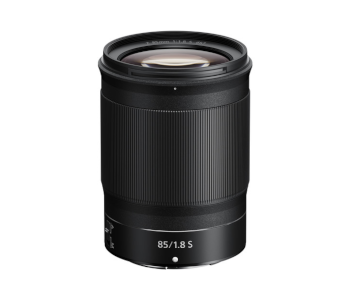 | Nikon NIKKOR Z 85mm f/1.8 S | 4.7 | 4.8 | 4.6 | 4.6 | Check Price |
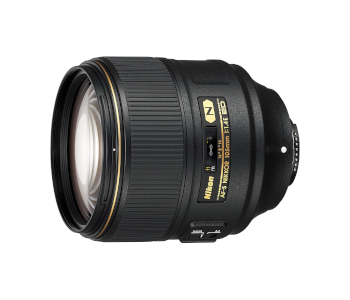 | Nikon AF-S FX NIKKOR 105mm f/1.4E ED | 4.6 | 4.7 | 4.5 | 4.6 | Check Price |
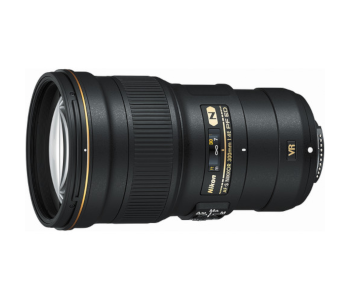 | Nikon AF-S NIKKOR 300mm f/4E PF ED VR | 4.4 | 4.5 | 4.3 | 4.5 | Check Price |
 | Nikon AF-P DX NIKKOR 70-300mm f/4.5-6.3G ED VR | 4.4 | 4.3 | 4.2 | 4.6 | Check Price |
1. Best Overall – Nikon AF-S NIKKOR 70-200mm f/2.8E FL ED VR
Editor’s Rating: 4.9/5
The AF-S NIKKOR 70-200mm f/2.8E FL ED VR is Nikon’s towering achievement in the realm of telephoto lenses. It’s as much a work of art as of complex and precise engineering. It balances perfectly on Nikon full-frame cameras, has several intuitive physical controls, and is as close to perfection as zoom lenses can get in terms of optical properties. Your wallet will hurt after purchasing it, but your craft will thrive in turn.
Overview of Features
The lens’s build quality and finish are outstanding. It’s heavy at more than three pounds but built with smooth handling and balance in mind. The two adjustment rings have enough give for precise yet quick adjustments, while the internal elements neither extend nor rotate. The barrel’s left side houses controls for the focus mode and distance lock as well as the activation and type of vibration reduction.
The AF-S NIKKOR 70-200mm f/2.8E FL ED VR uses a Silent Wave Motor whose name accurately describes its autofocus performance. It snaps to attention quickly aided by a focus limiter that splits its range at the five-meter point. You can adjust the focus manually in AF mode, or configure the four buttons circling the barrel to engage different types of autofocus with a press.
The Vibration Reduction technology handles image stabilization. Normal mode lets you shoot in challenging light with only a monopod while Sports mode eliminates vertical shake and delivers smooth panning motion.
The AF-S NIKKOR 70-200mm f/2.8E FL ED VR’s sharpness is remarkable for a telephoto zoom. Lab tests show that both the edge and center sharpness exceed 3,000 lines at 105 and 135mm on al aperture settings except f/22 when diffraction is evident. 70 and 200mm see softer edges at f/2.8, but edge sharpness recovers at f/4 and stays keen through f/16.
Other optical properties are equally impressive. The lens has 16 groups comprised of 22 elements, one of which is made from fluorite. Combined with a large hood, this makes the AF-S NIKKOR 70-200mm f/2.8E FL ED VR superbly resistant to flare and ghosting. There’s no barrel distortion at 70mm, a feat not many zoom lenses can equal. You do get some pincushion distortion at 200mm and can correct for it in-camera. Chromatic aberration is “worst” at 200mm and high f-stops, but even then, it barely exceeds 0.5 pixels and won’t be noticeable in real-life environments.
What We Didn’t Like
The only bad thing about the AF-S NIKKOR 70-200mm f/2.8E FL ED VR is its hefty price tag. You’ll see that the guide contains many more excellent lenses that are priced lower without taking a big hit in image quality. Even so, don’t hesitate to get this one if you demand nothing less than perfection.
| Tech Specs |
|---|
| Dimensions: 3.5 x 3.5 x 8 in. |
| Weight: 3.2 lbs. |
| Mount: Nikon F |
| Minimum focal length: 70mm |
| Maximum focal length: 200mm |
| Maximum aperture: f/2.8 |
| Minimum aperture: f/22 |
| Minimum focus distance: 3.6 ft. |
| Angle of view: 34° 20′ to 12° 20′ |
| Image stabilization: Yes |
| The Pros |
|---|
| Outstanding build quality and balance |
| Intuitive and useful physical controls |
| World-class optical properties |
| Quiet autofocus |
| The Cons |
|---|
| Expensive |
2. Best Value – Nikon AF-S NIKKOR 200-500mm f/5.6E ED VR
Editor’s Rating: 4.7/5
Are you a sports or wildlife photographer in search of a quality lens with an extended focal range? In that case, look no further than the NIKKOR 200-500mm f/5.6E ED VR. It strikes an excellent balance between affordability and features, is built to last, and has commendable optics. Fast autofocus and the depth of field its lower apertures make possible are inviting as well, and the ease with which you can handle it seals the deal.
Overview of Features
The NIKKOR 200-500mm f/5.6E ED VR looks intimidating at first glance, It weighs more than five pounds and extends to a length of ten inches. However, the lens doesn’t feel cumbersome to hold even for extended periods since its weight is distributed so well. It has a sturdy tripod collar that you can use to rotate the camera or remove to shave off some weight. There are fewer physical controls than on our top-rated lens, and we appreciate the lock that prevents zoom creep while keeping the lens fixed at 200mm when not in use.
Photographers who shoot action will love what the NIKKOR 200-500mm f/5.6E ED VR can do. F/5.8 is still fast enough to let you dial up the shutter speed in good light and capture split-second plays or unique animal behavior. The fast and accurate AF motor helps keep subjects sharp, as is Vibration Reduction. The stabilization technology delivers on its promised 4.5 stops of correction. It compensates for some of the lens’s heft since you don’t need to depend on a tripod to avoid blurry photos.
The NIKKOR 200-500mm f/5.6E ED VR is a strong performer when it comes to sharpness. The center of your frame will be rich in detail, no matter what focal length and aperture size combination you need. Edges lose pace only at 200mm and f/5.6 but follow central sharpness closely otherwise. Keep the f-stops between f/8 and f/16 for optimum results, but don’t be afraid to experiment with other values as only f/32 at 300 and 500mm is lackluster.
The lens starts off with negligible pincushion distortion that increases but stays manageable at its farthest focal length. You’ll see no color fringing at the center while it’s controlled well in the corners. Complex optics and fluorine coating ensure detail preservation when the sun is in your images, and f/5.6 can produce pleasingly blurry backgrounds.
What’s Bad About It?
While the NIKKOR 200-500mm f/5.6E ED VR is a fine lens, we can’t say the same for its accessories. Removing and reattaching the tripod collar takes strength and patience. On the other hand, the lens hood is poorly made and prone to popping off.
| Tech Specs |
|---|
| Dimensions: 4.3 x 4.3 x 10.5 in. |
| Weight: 5.1 lbs. |
| Mount: Nikon F |
| Minimum focal length: 200mm |
| Maximum focal length: 500mm |
| Maximum aperture: f/5.6 |
| Minimum aperture: f/32 |
| Minimum focus distance: 7.2 ft. |
| Angle of view: 12° 20′ to 5° |
| Image stabilization: Yes |
| The Pros |
|---|
| Excellent value for the money |
| Good all-around sharpness and flare reduction |
| Well-balanced and light considering its specs |
| Controlled pincushion distortion and chromatic aberration |
| The Cons |
|---|
| Tripod collar is hard to attach |
| Flimsy lens hood |
3. Nikon NIKKOR Z 85mm f/1.8 S
Editor’s Rating: 4.7/5
Nikon’s line of Z-mount lenses was in desperate need of a telephoto prime until the NIKKOR Z 85mm f/1.8 S finally hit the market a few months ago. The wait has been long but worth it as the lens is quick, amazingly sharp, and whisper-quiet. Don’t hesitate to grab one if you’re a Z mount user specializing in portraits, weddings, and even macro photography.
Overview of Features
Austere is the word that best fits the NIKKOR Z 85mm f/1.8 S’s appearance. There’s a single, very wide focus ring that’s ridged and rubberized for more grip. The lone switch toggles from automatic to manual focus, and you can assign custom controls like EV comp or aperture selection to the focus ring if set to the former. The lens’s look is rounded out by a deep hood on one end and metal mount on the other. Its barrel is plastic but finely-made and protected from the elements-
This is one of the sharpest lenses we’ve ever reviewed! Center-weighted tests show that it exceeds 4,000 lines on full-frame Z-mount cameras. Edge sharpness doesn’t reach stellar levels until f/2.8, but it’s good enough to shoot wide-open and not worry about soft images. The NIKKOR Z 85mm f/1.8 S is ideal for instant wildlife photos and can work its magic in candle-lit churches or at dimly-lit concerts.
A wide mix aperture also makes for a shallow depth of field, letting you blur the background to draw even more attention to subjects. Nine rounded aperture blades create circular and smooth bokeh that makes for a beautiful backdrop. The NIKKOR Z 85mm f/1.8 S isn’t a macro lens as it can only reach 1:8.3 magnification. However, its focal length and aperture make for acceptable performance that will tide you over until Nikon releases a Z-mount macro lens in earnest.
None of the lens’s other optics match up to its sharpness, but they aren’t problematic either. Vignetting at f/1.8 is the worst offender, but you can reduce it by going down to f/2 or use your camera’s built-in reduction for pleasing results. There’s no CA, and the little barrel distortion that crops up doesn’t affect real-world photos.
Are There Drawbacks?
The NIKKOR Z 85mm f/1.8 S’s focus system might not grow on you, especially if you were planning to use the lens for videos. Its focusing doesn’t have linear action, meaning it will make more gradual adjustments the slower you turn it. This wouldn’t be a problem if the ring weren’t too sensitive. The autofocus is quiet and works accurately for photos. However, it changes the viewing angle when acquiring targets in video mode, which creates a distracting effect.
| Tech Specs |
|---|
| Dimensions: 3 x 3 x 3.9 in. |
| Weight: 1 lb. |
| Mount: Nikon Z |
| Focal length: 85mm |
| Maximum aperture: f/1.8 |
| Minimum aperture: f/16 |
| Minimum focus distance: 2.6 ft. |
| Angle of view: 28° 30′ |
| Image stabilization: No |
| The Pros |
|---|
| Outstanding sharpness across the board |
| Creates shallow depth of field with soft, round bokeh |
| Great build quality and weather sealing |
| Minimal barrel distortion and no CA |
| The Cons |
|---|
| Sensitive focus ring with non-linear action |
| Autofocus isn’t suited for videos |
4. Nikon AF-S FX NIKKOR 105mm f/1.4E ED
Editor’s Rating: 4.6/5
The following lens is a testament to Nikon’s power of innovation as it’s the world’s first telephoto prime with a focal length of 105mm at a bright aperture of f/1.4. You’d expect a lens like this to be bulky and weigh a ton, but it balances well without compromising image quality. It’s tack-sharp, quick to focus, and has no optical quirks you couldn’t correct for in post.
Overview of Features
We were surprised by the AF-S FX NIKKOR 105mm f/1.4E ED’s weight and handling. Even though it’s by no means light, the lens isn’t unwieldy either. The plastic barrel helps cut down on its weight. It doesn’t reduce build quality since it’s sturdy, and the fit & finish is excellent. There’s a rear lens element along with a rubber gasket for effective weather sealing, and fluorine coating has been applied to the outer glass to make it smudge-resistant.
The lens uses an older version of the Sonic Wave Motor that has no bearing on its exemplary autofocus performance. The f/1.4 aperture produces a very shallow depth of field that gives no margin for error when focusing on subjects, and the AF-S FX NIKKOR 105mm f/1.4E ED has no trouble maintaining clarity under any light when your subject is stationary. It keeps up with erratic and fast-paced movement well in bright light but can falter at times if you’re shooting in the dark.
This is another remarkably sharp lens, even when wide open. Edge sharpness at f/1.4 is so good that you can take landscape photos focused at infinity and get breathtaking results. Clarity keeps improving as you step down, reaching its peak at f/4.
The AF-S FX NIKKOR 105mm f/1.4E ED is one of the finest lenses in the world if you’re after dreamy background highlights. Its bokeh is perfectly round towards the center with no sharp outlines or fringing. Moving towards the edges gives it a slight cat’s eye effect normal for lenses at this focal length.
Barrel distortion doesn’t affect field performance as it’s less than one percent. Lateral chromatic aberration is decently controlled, as are flaring and ghosting thanks to the lens’s complex optics and a large plastic hood.
What We Didn’t Like
The AF-S FX NIKKOR 105mm f/1.4E ED exhibits strong vignetting at f/1.4. It amounts to more than 2.5 stops and is clearly visible. You can correct the falloff in post or reduce the aperture to f/2.8 for much better results. One thing you can’t correct as easily is longitudinal chromatic aberration or fringing that occurs around contrasting objects.
| Tech Specs |
|---|
| Dimensions: 3.8 x 3.8 x 4.2 in. |
| Weight: 2.2 lbs. |
| Mount: Nikon F |
| Focal length: 105mm |
| Maximum aperture: f/1.4 |
| Minimum aperture: f/16 |
| Minimum focus distance: 3.3 ft. |
| Angle of view: 23° 10′ |
| Image stabilization: No |
| The Pros |
|---|
| Exceptional sharpness at any aperture |
| Reliable autofocus system capable of tracking fast-moving subjects |
| Resistant to the weather and smudges |
| World-class bokeh |
| The Cons |
|---|
| Pronounced vignetting at f/1.4 |
| Prone to LoCA |
5. Nikon AF-S NIKKOR 300mm f/4E PF ED VR
Editor’s Rating: 4.4/5
Nikon users have been asking for a stabilized version of the company’s popular 300mm full-frame telephoto prime, and the NIKKOR 300mm f/4E PF ED VR delivers. It’s incredibly compact and light for such a large focal length. The lens is also well-made and sharp across the board. Getting it is a no-brainer if you’re looking for a portable and reliable telephoto prime, just remember not to keep bright light sources out of your photos.
Overview of Features
It’s easy to mistake the NIKKOR 300mm f/4E PF ED VR for a lens with a much shorter focal length due to its size and weight. Such a reduction is made possible by a Phrase Fresnel element that excels at collecting light and noticeably reduces barrel length requirements. The single ring is responsive and lets you fine-tune focus with a steady grip in precise increments. Behind it are three switches controlling the focus mode and limit as well as Vibration Reduction.
The lens uses the latest Silent Wave Motor to deliver consistently accurate focusing even in challenging situations. You’ll love it if you’re a documentary filmmaker as the lens focuses almost soundlessly and won’t be heard on video. It rotates internally and doesn’t extend when acquiring focus, meaning you can attach ND filters and polarizers. Vibration reduction is an effective means of image stabilization, but users of D8xx series cameras have reported sub-par performance Nikon has since addressed with firmware updates.
The NIKKOR 300mm f/4E PF ED VR’s sharpness is commendable. Expect reasonably detailed edges and corners from the get-go. Edge sharpness improves only slightly as you step down while center sharpness goes from great when open to outstanding at f/5.6 and f/8. The next two stops are fine as well, but diffraction starts cutting into the clarity at f/22.
Distortion control is the NIKKOR 300mm f/4E PF ED VR’s best optical characteristic. You’d have to conduct lab tests or snap pictures of brick walls to notice the little pincushion distortion there is. Vignetting is a factor at f84 but mild enough to give images character if you don’t want to counter it in-camera. Color fringing rarely exceeds one pixel while bokeh is pleasing to look at but onion-shaped at max aperture.
What’s Bad About It?
The NIKKOR 300mm f/4E PF ED VR’s Fresnel element causes severe flaring when shooting into bright light. Images taken under such conditions are washed out, and you can see halos around objects the light hits strongly. You can get around the problem by facing away from light sources, but that limits your creative freedom. The lens doesn’t come with a tripod mount. A compatible one is sold as an expensive optional accessory and isn’t stable.
| Tech Specs |
|---|
| Dimensions: 3.5 x 3.5 x 5.8 in. |
| Weight: 1.6 lbs. |
| Mount: Nikon F |
| Focal length: 105mm |
| Maximum aperture: f/4 |
| Minimum aperture: f/32 |
| Minimum focus distance: 4.6 ft. |
| Angle of view: 8° 10′ |
| Image stabilization: Yes |
| The Pros |
|---|
| Lightweight and portable for a 300mm prime |
| Quick and silent autofocus |
| Distortion and vignetting are controlled well |
| Effective image stabilization |
| The Cons |
|---|
| Severe flaring and loss of contrast when shooting into the light |
| Expensive and ineffective tripod mount |
6. Best Budget Option – Nikon AF-P DX NIKKOR 70-300mm f/4.5-6.3G ED VR
Editor’s Rating: 4.4/5
Our budget pick is a telephoto zoom every Nikon DX user should have in her bag. The NIKKOR 70-300mm f/4.5-6.3G ED VR is a no-frills, stabilized lens that’s effortless to use ad has exemplary optics for its size and price. The lens works well in low light despite the low max aperture. It handles flaring better than many pricier competitors and is an overall pleasure to work with, whether you’re into portraits, wildlife, or urban photography.
Overview of Features
The NIKKOR 70-300mm f/4.5-6.3G ED VR fits DX-format cameras with cropped sensors, but it’s small and light even for its class. Its body is made entirely from plastic, as is the mount. However, all of its parts fit closely together, and attention to detail is evident. The lens has a minimalistic design as any physical switches are omitted. That allowed its engineers to focus on designing more responsive focus and zoom rings. Both are damped well and resist enough not to be moved accidentally while letting you adjust the lens smoothly.
The AF-P in its name refers to a new generation of stepping motor Nikon claims is silent, accurate, and quick to latch on to subjects. These advertising claims aren’t exaggerated; filmmakers will be pleased by the lack of noise during focusing while everyone benefits from minimal hunting and accurate lock-on. Vibration reduction on the NIKKOR 70-300mm f/4.5-6.3G ED VR is excellent as it compensates for four stops. Combined with the autofocus, this lets you pull off wonderful shots of sunsets or indoor portraits without reaching for a tripod.
Sharpness is acceptable but nothing special at 70mm and f/4.5. Results improve as you narrow the aperture and reach their peak for the focal length at f/8 to f/11. The NIKKOR 70-300mm f/4.5-6.3G ED VR is at its best when zoomed to 170mm, exhibiting even sharpness across the frame at all apertures except f/22. Setting it to 300mm reintroduces some corner softness you can easily mitigate by framing your shots wisely.
A narrow max aperture means the NIKKOR 70-300mm f/4.5-6.3G ED VR isn’t a lens capable of making creamy bokeh, but the background blur is still pleasant and effectively frames subjects. Optically, the lens is at its weakest at 170mm, where vignetting and pincushion distortion are most pronounced. Both values are well within acceptable and easily corrected limits, though. We were also impressed with the lens’s flare and ghosting resistance. Turn the aperture down and capture some sun stars as they’ll look attractive and won’t upset overall contrast.
Are There Drawbacks?
The newly-introduced autofocus system makes the NIKKOR 70-300mm f/4.5-6.3G ED VR incompatible with old cameras like the D5100 or D3200. Mounting it on incompatible bodies results in a blurry mess you can’t correct because the focus ring doesn’t work. Consider a model with a sturdier mount if you change lenses often as the plastic mount on this one is prone to wear.
| Tech Specs |
|---|
| Dimensions: 2.8 x 2.8 x 4.9 in. |
| Weight: 0.9 lbs. |
| Mount: Nikon DX |
| Minimum focal length: 70mm |
| Maximum focal length: 300mm |
| Maximum aperture: f/4.5 to 6.3 |
| Minimum aperture: f/22 to 32 |
| Minimum focus distance: 3.6 ft. |
| Angle of view: 22°50′ to 5°20′ |
| Image stabilization: Yes |
| The Pros |
|---|
| Exceptional value for the money |
| Quiet and reliable autofocus |
| VR lets you shoot in low light with good results |
| Decent optical properties |
| The Cons |
|---|
| Plastic mount may wear out with frequent lens changes |
| Isn’t compatible with older Nikon cameras |
Contents
- Nikon Telephoto Lenses Comparison Table
- 1. Best Overall – Nikon AF-S NIKKOR 70-200mm f/2.8E FL ED VR
- Overview of Features
- What We Didn’t Like
- 2. Best Value – Nikon AF-S NIKKOR 200-500mm f/5.6E ED VR
- Overview of Features
- What’s Bad About It?
- 3. Nikon NIKKOR Z 85mm f/1.8 S
- Overview of Features
- Are There Drawbacks?
- 4. Nikon AF-S FX NIKKOR 105mm f/1.4E ED
- Overview of Features
- What We Didn’t Like
- 5. Nikon AF-S NIKKOR 300mm f/4E PF ED VR
- Overview of Features
- What’s Bad About It?
- 6. Best Budget Option – Nikon AF-P DX NIKKOR 70-300mm f/4.5-6.3G ED VR
- Overview of Features
- Are There Drawbacks?

